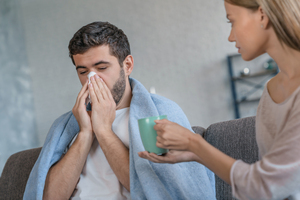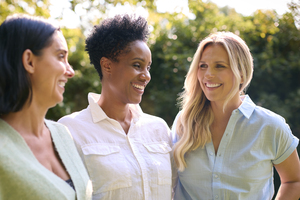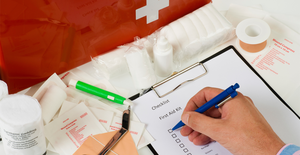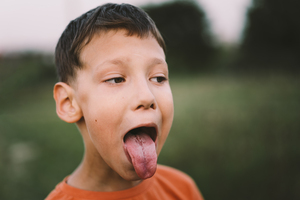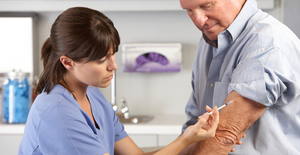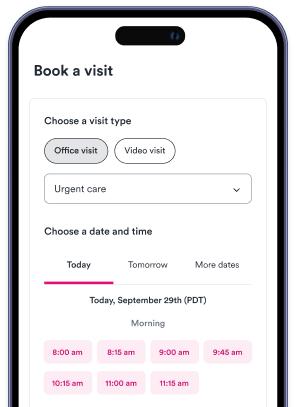Key points
- Heat rash, common in children, occurs when sweat gets trapped under the skin due to blocked sweat glands, causing red, itchy bumps.
- Preventing heat rash involves keeping kids cool, dry, and comfortable, especially during hot weather, and avoiding tight or synthetic fabrics.
- If heat rash develops, cool the skin, avoid oil-based products, and dress the child in loose, breathable clothing to promote healing.
- Seek medical attention for heat rash if signs of infection appear, the rash lasts more than a week, or it does not respond to home treatments.

When the weather heats up, keeping kids cool becomes a top priority — not just for their comfort, but to prevent issues like heat rash. This common skin irritation can appear as tiny red bumps or blisters, often in areas where sweat gets trapped. While heat rash is usually harmless, it can be itchy and uncomfortable, especially for young children who may struggle to communicate their discomfort. The good news? With a few simple precautions, you can help your child stay cool and rash-free, even during the hottest days of summer.
What is heat rash and why does it happen?
Heat rash, also known as prickly heat or miliaria, is a skin condition that occurs when sweat becomes trapped under the skin due to blocked sweat glands. This can lead to tiny, red, itchy bumps that sometimes form blisters, commonly appearing on areas where sweat accumulates, such as the neck, armpits, chest, and back. The condition is often triggered by hot, humid weather or excessive sweating. In children, heat rash is more common because their sweat glands are still developing and can become blocked more easily compared to adults. Additionally, young children have less ability to regulate body temperature efficiently, making them more susceptible to overheating and, consequently, heat rash.
Common signs of heat rash in kids
Heat rash in kids typically presents as clusters of small, red, itchy bumps, often accompanied by a prickling or stinging sensation. The rash usually appears in areas where sweat becomes trapped, such as the neck, armpits, groin, and chest. Depending on the severity and depth of the blocked sweat glands, heat rash can manifest in different forms:
- Miliaria Crystallina: the mildest type, appears as small, clear, fluid-filled blisters that easily break.
- Miliaria Rubra: also known as prickly heat, is more common and is characterized by red, inflamed, itchy bumps that cause discomfort.
- Miliaria Profunda is the most severe type of heat rash and occurs when sweat leaks into the deeper layers of the skin, forming firm, flesh-colored lesions.
In addition to the appearance of the rash, symptoms to watch for include:
- Itching
- Mild swelling
- Irritation, especially in skin folds where moisture and heat accumulate
Recognizing these signs early can help parents take steps to cool their child down and prevent further skin irritation.
5 best ways to prevent heat rash in kids
Preventing heat rash in kids involves a combination of keeping them cool, dry, and comfortable, especially during hot and humid weather:
- One of the most effective ways to minimize the risk is by dressing them in lightweight, breathable fabrics like cotton or moisture-wicking materials, which help sweat evaporate rather than trap moisture against the skin.
- Avoid tight or synthetic fabrics, as these can increase friction and sweat buildup. Keeping kids cool and hydrated is equally important, so encourage them to drink water frequently and offer electrolyte drinks if they are active outdoors.
- Managing the environment also plays a crucial role; use fans or air conditioning indoors, and try to limit outdoor play during peak heat hours, typically between 10 a.m. and 4 p.m.
- Opt for gentle skincare. Avoid heavy creams or lotions that can clog pores, and instead choose hypoallergenic, fragrance-free products to reduce irritation.
- Lastly, bathing frequently with lukewarm water helps remove sweat and oils from the skin. Afterward, make sure to pat the skin dry gently, as rubbing can cause further irritation.
Immediate care tips if heat rash develops
If heat rash develops, the first step is to cool down the affected skin to reduce discomfort and inflammation:
- Gently apply a cool, damp cloth to the rash for a few minutes to soothe the irritated area, and then allow the skin to air dry rather than using a towel, as rubbing can worsen the irritation.
- Once the skin is dry, you can apply a mild, fragrance-free lotion, such as calamine, to help reduce itching and calm the skin.
- Avoid using oil-based products or heavy creams, as these can clog sweat ducts and exacerbate the rash.
- Keeping the affected area dry and well-ventilated is essential to promote healing, so dress your child in loose, breathable clothing and avoid overheating.
When to seek medical attention
While most cases of heat rash are mild and resolve with home care, it’s important to know when to seek medical attention:
- One key indicator is the presence of signs of infection, such as pus or yellowish fluid oozing from the rash, increased redness or swelling, or pain that worsens rather than improves.
- Additionally, if a fever accompanies the rash, it may indicate a more serious underlying infection requiring medical intervention.
In severe cases of heat rash, parents should also be cautious if:
- The rash lasts more than a week
- Spreads to larger areas of the body
- Does not respond to home treatments like cooling the skin and applying gentle lotions
If any of these symptoms occur, it’s best to get checked out at an urgent care clinic to assess the rash and recommend appropriate treatment, as prolonged or worsening symptoms could indicate a more serious condition that needs medical management.
Tips for keeping kids cool during summer activities
Keeping kids cool during summer activities is essential to prevent overheating and reduce the risk of heat rash. Similar to the steps to prevent heat rash, parents can start by dressing their child in light-colored, loose-fitting clothing, as light colors reflect sunlight rather than absorbing heat. If they are playing outdoors, set up shaded areas using umbrellas, canopies, or tents to provide a cool retreat from direct sun exposure.
During sports or physically demanding activities, offer portable cooling options such as handheld fans or cooling towels to help lower their body temperature. Additionally, make sure to encourage frequent breaks, especially when temperatures soar, allowing time to hydrate and rest. Teaching kids to recognize the signs of overheating and reminding them to take breaks when needed can make summer activities safer and more enjoyable.
FAQs about heat rash in kids
Can heat rash spread from one child to another?
Heat rash itself is not contagious and cannot spread from one child to another. It occurs when sweat glands become blocked, causing irritation and inflammation. Heat rash does not spread through physical contact since it is triggered by heat and sweat rather than bacteria or viruses. However, keeping kids cool and dry can help prevent new cases when several children are playing in hot, humid conditions.
What are the best products to use for preventing heat rash?
The best products for preventing heat rash include lightweight, breathable fabrics such as cotton clothing that allows air circulation and moisture-wicking materials that draw sweat away from the skin. Gentle, fragrance-free lotions like calamine or aloe vera gel can help soothe the skin without clogging pores. Additionally, using talc-free powders specifically formulated for babies can help absorb moisture and reduce chafing in areas prone to sweating.
Are some children more prone to heat rash than others?
Yes, some children are more prone to heat rash, particularly infants and toddlers, due to their underdeveloped sweat glands and less efficient temperature regulation. Children with sensitive skin or those prone to eczema may also experience heat rash more frequently. Additionally, kids who engage in high-intensity physical activities or live in hot, humid climates may be more susceptible.
How long does it take for heat rash to heal?
Most mild cases of heat rash heal within a few days when the skin is kept cool and dry. In more severe cases, where the rash has become inflamed or infected, it may take up to a week or longer for symptoms to fully resolve, especially if medical treatment is required. Prompt care, including cooling the skin and avoiding heavy lotions, can speed up the healing process.
Find an urgent care near you for heat rash concerns
If your child's heat rash is severe, unresponsive to home treatments, or shows signs of infection, such as oozing, increased redness, swelling, or fever, it’s important to seek medical care. Parents can use Solv to quickly find urgent care centers nearby that can provide professional evaluation and treatment.
FAQs
What is heat rash and why is it common in children?
Heat rash, also known as prickly heat or miliaria, is a skin condition that occurs when sweat gets trapped under the skin due to blocked sweat glands. This leads to tiny, red, itchy bumps that sometimes form blisters, typically appearing on areas where sweat accumulates. Heat rash is common in children because their sweat glands are still developing and can become blocked more easily. Additionally, young children have less ability to regulate body temperature efficiently, making them more susceptible to overheating and heat rash.
What are the signs of heat rash in kids?
Heat rash in kids typically presents as clusters of small, red, itchy bumps, often accompanied by a prickling or stinging sensation. The rash usually appears in areas where sweat becomes trapped, such as the neck, armpits, groin, and chest. Symptoms to watch for include itching, mild swelling, and irritation, especially in skin folds where moisture and heat accumulate.
How can I prevent heat rash in my child?
Preventing heat rash involves keeping your child cool, dry, and comfortable, especially during hot and humid weather. Dress them in lightweight, breathable fabrics like cotton or moisture-wicking materials, and avoid tight or synthetic fabrics. Encourage them to drink water frequently and offer electrolyte drinks if they are active outdoors. Use fans or air conditioning indoors, limit outdoor play during peak heat hours, and opt for gentle skincare. Bathing frequently with lukewarm water and patting the skin dry gently can also help.
What should I do if my child develops heat rash?
If your child develops heat rash, the first step is to cool down the affected skin to reduce discomfort and inflammation. Apply a cool, damp cloth to the rash for a few minutes, then allow the skin to air dry. Once the skin is dry, you can apply a mild, fragrance-free lotion, such as calamine, to help reduce itching. Avoid using oil-based products or heavy creams, and dress your child in loose, breathable clothing.
When should I seek medical attention for my child's heat rash?
While most cases of heat rash are mild and resolve with home care, you should seek medical attention if the rash lasts more than a week, spreads to larger areas of the body, does not respond to home treatments, or if signs of infection appear, such as pus or yellowish fluid oozing from the rash, increased redness or swelling, or pain that worsens rather than improves. A fever accompanying the rash may also indicate a more serious underlying infection requiring medical intervention.

